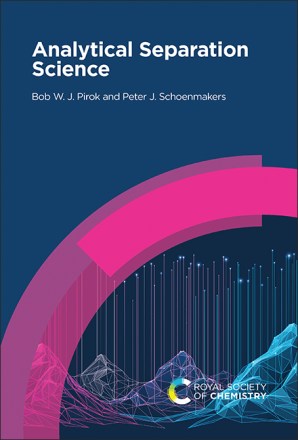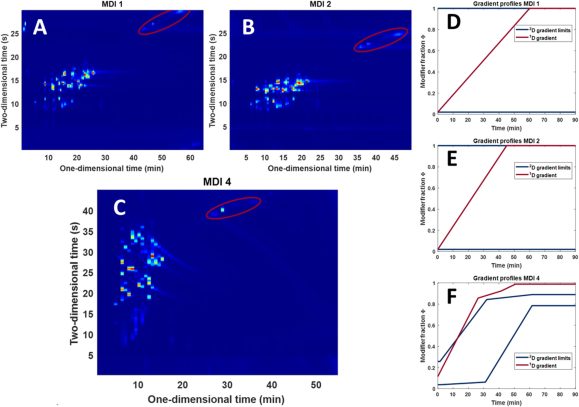It is a tradition within our CAST group to attend one major scientific conference each year as a unified team. This provides an opportunity to present our work, strengthen internal cohesion, and engage with the broader research community. With liquid-phase separations as a common thread across our projects, all scientists from the CAST group, as well as those involved in related projects embedded within the Centre for Analytical Sciences Amsterdam, were therefore present at the HPLC 2025 symposium in Bruges, Belgium.

The full CAST group with fellow CASA members at the conference dinner party on Wednesday at HPLC2025 in Bruges, Belgium.
Four poster nominations for the Gargano team
The CAST group contributed to the symposium with a large number of posters. On Monday and Tuesday, our young scientists presented and discussed their work with the delegates. All four posters of the team of Andrea Gargano were nominated for the Best Poster Award.
Improving IgG Glycoform Analysis with Advanced HILIC-MS
Thomas Holmark presented his latest advances in improving the sensitivity and reliability of IgG glycoform analysis. Their work focuses on developing capillary-based HILIC-MS methods to better characterize glycosylation patterns in immunoglobulin G (IgG), which are important biomarkers for disease progression. By optimizing monolithic column synthesis and implementing self-packed trap columns, the team significantly reduced sample carryover and enhanced detection sensitivity—paving the way for more accurate, low-input analysis of IgGs secreted by in-vitro stimulated B-cells.

Masa Sawisawa, Thomas Holmark, Annika van der Zon and Ziran Zhai were nominated for a Best Poster Award.

Annika van der Zon receiving her best poster pitch prize.
Third poster-pitch prize for monolithic HILIC-MS for Monoclonal Antibody Glycoform Profiling
Annika van der Zon introduced an acrylamide-based monolithic HILIC stationary phase, specifically designed to overcome the limitations of conventional silica-based materials. This new column enables high-resolution separation of intact mAb glycoforms, significantly outperforming traditional LC-MS methods such as RPLC. Using trastuzumab as a model, the team achieved chromatographic separation and mass spectrometric identification of up to 17 N-glycoforms—demonstrating enhanced sensitivity to minor variants. This development represents a major step forward in therapeutic antibody characterization, offering a powerful tool for quality control and drug development
NanoSEC-nMS Enhances Native Protein Complex Characterization
Ziran Zhai was also nominated for the poster-pitch prize and presented an innovative nanoflow size-exclusion chromatography-native mass spectrometry (nanoSEC-nMS) method at HPLC 2025, pushing the boundaries of intact protein and protein complex analysis. By operating at ultra-low flow rates (500 nL/min) and using capillary-format columns, the method drastically reduces sample requirements while preserving native protein structures and non-covalent interactions. This approach enables sensitive, high-resolution analysis of complex biomolecular assemblies, even from limited or biologically relevant samples like urine. With enhanced ionization stability and compatibility with high-salt buffers, nanoSEC-nMS represents a powerful advancement for native top-down proteomics and structural biology workflows.
Pharmaceutical Analysis Poster Award for Masa Serizawa
Masa Serizawa showcased a major advance in the analysis of biodegradable polymers, focusing on poly(lactic-co-glycolic acid) (PLGA)—a cornerstone material in drug delivery systems. The team developed optimized SEC-MS and normal-phase LC methods to achieve precise characterization of PLGA microstructure, including molecular weight distribution (MWD), chemical composition distribution (CCD), and functionality-type distribution (FTD). By minimizing fragmentation during electrospray ionization with cesium iodide, they enabled reliable identification of PLGA isomers and block structures. Furthermore, their new NPLC approach extends analysis to high-molecular-weight PLGAs (up to 185 kDa), offering detailed insight into both end-group functionality and lactic/glycolic acid ratios. These innovations pave the way for the design of more effective, tailored PLGA-based drug delivery platforms. He was awarded the Best Pharmaceutical Analysis Poster Award for his great work.

Masa Serizawa receiving the Best Pharmaceutical Analysis Poster Award.
Other poster contributions from PhD candidates included those of Sanne Boot, who showcased her efforts to simulate LC×LC-MS data for optimizing oligonucleotide separations, enabling the exploration of separation conditions within complex chemical spaces. PhD candidate Gerben van Henten showed his work on the evaluation of chromatographic response functions. His poster explained how some optimization methods struggle with chromatographic response functions that fundamentally were believed to be suitable.
Several CAST graduate students were also present at HPLC2025. Lonneke van Dalen presented her poster on developing a new peak integration method using neural networks in collaboration with Unilever.
Merel Konings demonstrated the optimization of light degradation reactors to conduct degradation studies in liquid-phase separations, and Rebecca Gibkes presented her work on plate-height modeling and peak parking as part of a collaboration between the University of Amsterdam, the Vrije Universiteit Brussel and Gustavus Adolphus College.
Rick van den Hurk as Csaba Horvath Finalist

Rick van den Hurk presenting his latest work on the effect of a lack of radial mixing in systems where flows are combined.
Rick van den Hurk was nominated as Csaba-Horváth finalist and addressed a key obstacle in expanding two-dimensional liquid chromatography (2D-LC): the solvent mismatch between coupled separation dimensions. His work focused on active modulation strategies, such as SPAM, ACD, and ASM, that dilute the first-dimension effluent with a weaker solvent to improve retention and peak shape in the second dimension. Using experimental setups and computational fluid dynamics simulations, the team investigated how radial mixing at T-junction interfaces impacts analyte retention. Van den Hurk explained how these findings provide valuable insights into optimizing flow conditions and mixer design, paving the way for broader and more robust application of 2D-LC in industrial and research settings. This work is conducted in collaboration with the group of Dwight Stoll at Gustavus Adolphus College.
Bob Pirok was invited to present a lecture on the state of machine learning in chromatography, and explained during his presentation the importance of equiping machine-learning workflows with suitable data processing strategies. A key part of the lecture focused on the work by CAST researcher Nino Milano and his efforts to simulate realistic 2D chromatographic data for the evaluation of peak detection algorithms.
Andrea Gargano presented a novel HILIC-MS approach using custom-designed acrylamide-based monolithic columns to improve the analysis of intact biomacromolecules. These columns offer enhanced selectivity and reduced secondary interactions, enabling the separation of closely related variants that are challenging for traditional RPLC-MS. Gargano demonstrated applications which included the resolution of oligonucleotide impurities, glycated protein isomers, and monoclonal antibody glycoforms, advancing analytical capabilities in therapeutic development and quality control.
Luca Tutis’s contribution on the development of an ion-pair HILIC method for oligonucleotide impurity analysis was selected for a talk. This method significantly alters HILIC selectivity for ONs by emphasizing nucleobases and conjugated groups (GalNAc) over highly polar phosphate groups. This enabled the resolution of deamination, non-conjugated, and PS-PO converted impurities. Importantly, this IP-HILIC approach is fully compatible with MS, crucial for accurate impurity identification.
Honorary CAST member and emeritus professor Peter Schoenmakers lectured on the sense and nonsense of artificial intelligence in chromatography and gave a historical overview in his lecture along with applications that he placed into context using fundamental principles known to chromatographers.
Special events
Advancing Education in Separation Science
Andrea Gargano, Simone Dimartino and Martina Catani organized the Education session workshop, introducing in the HPLC program a new space to discuss innovation in education. Many delegates joined discussing innovations in separation science education (including teaching materials, software based tools, project based learning and a session discussing perspectives in skills and knowledge that the analytical scientist of the future should be educated on) including Bob Pirok.
Second prize in HPLC Tube
Dissemination of scientific work is incredible important to inform society about the latest progress. In this context, the symposium annually hosts the HPLC Tube where researchers can make brief videos to explain their work. CAST researchers Andrea Gargano, Annika van der Zon, Ziran Zhai and Thomas Holmark won the third prize in this category on their video entitled: “Stay Intact: AcryHILIC’ Glycoform Impact.”

Scientists discussed the state of current education practice of chromatography and how to improve this further.

Bob dedicating the first official copy to CASA leader and co-teacher Prof. Govert Somsen.
Launch of educational textbook Analytical Separation Science
Bob Pirok and Peter Schoenmakers launched their textbook Analytical Separation Science. The book is designed to support students, educators, and practitioners by offering a comprehensive and structured overview of modern separation techniques. With clear explanations, didactic modules, and academic exercises, it serves as a valuable resource for classroom teaching and self-study alike. The book is accompanied by an interactive website (https://ass-ets.org), featuring figures, lectures, and supporting materials to bridge the gap between theory and practice.
Short course in AI in Chromatatography
Bob Pirok and Tijmen Bos delivered a well-attended short course on Artificial Intelligence in Chromatography, introducing participants to the growing role of AI in analytical method development and data processing. The course covered foundational concepts in machine learning, modern optimization techniques, and practical applications across the chromatographic workflow, from peak detection to intelligent gradient design. Through interactive examples and real-world case studies, the session provided researchers and practitioners with the tools to understand and begin applying AI in their own laboratory environments.

Scientists discussed the state of current education practice of chromatography and how to improve this further.



















